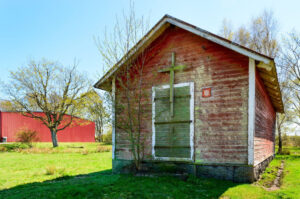
Some buildings are more than just storage—they’re part of the story of your property. Maybe it’s an old workshop your grandfather built, or a vintage shed that’s stood strong for decades. When structures like these still serve a purpose, many folks prefer to move them rather than tear them down or replace them.
But when it comes to relocating older buildings—even just across your yard—there are a few things you really don’t want to overlook. Age brings character, but it also brings wear, hidden weaknesses, and quirks that make a move a bit more complicated. If you’re thinking about shifting an older structure to a new spot, here’s what you should know first.
Is the Building Still Structurally Sound?
An older shed or cabin might look fine at first glance, but time, weather, and wear can take a toll—especially on buildings that have been sitting in one place for decades.
Before any move, it’s critical to check how solid the structure really is. That means more than just peeking at the floor. We’re talking about checking for signs of water damage, wood rot, insect activity, or rusted fasteners. Look closely at the corners, rooflines, and floor joists. Are things sagging or pulling apart? Have nails popped or siding come loose?
If we’re involved in the move, we’ll walk you through this inspection and point out anything that could pose a risk. A few quick reinforcements—like bracing a floor or shoring up a wall—can mean the difference between a successful move and a costly mistake.
Getting It Ready to Move
Even if the structure passes inspection, it may still need some attention before we get it off the ground. With older buildings, small flaws can turn into big problems under stress. Loose nails, warped frames, and dried-out materials all become more fragile during relocation.
That’s why we take extra steps to secure things in place. We might brace interior walls, strap down doors and windows, and remove anything that could get damaged along the way—like ramps, awnings, or exterior trim. These preparations are about protecting the structure, not changing it. We want your building to look the same at the end of the move as it did before we touched it.
Protecting Sentimental or Vintage Details
Some of the buildings we move have real history. Maybe the windows still have old wavy glass, or the siding is original barnwood. Those features matter, and we respect that.
Before any move, we take note of anything that’s fragile, irreplaceable, or holds sentimental value. In some cases, we’ll carefully remove delicate parts—like a weathered sign or decorative trim—so we can reinstall them later without damage. Every move is planned to reduce vibration, shifting, or stress to the building’s materials, especially when they’re unique or aged.
Our goal isn’t just to move your structure—it’s to preserve its character.
Equipment and Approach Matter More Than Ever
Older buildings demand a gentler touch. While newer structures are often more forgiving, vintage or well-used buildings can crack or twist if they’re not handled with care.
At Outback Transport, we use low-impact dollies, skids, and hydraulic lifts to spread weight evenly and reduce pressure on any one point of the building. We don’t rush the process—we lift slowly, monitor carefully, and adjust our approach if we see signs of stress. It’s not always flashy, but this extra attention helps prevent damage that would be difficult—or impossible—to fix.
After the Move: Don’t Skip the Final Checks
Once your building is in its new location, the job is not quite finished. Older structures are more likely to settle or shift over time, especially if the ground isn’t perfectly level or the foundation is different from the original site.
After the move, we always recommend taking a close look at the structure. Make sure the doors still open smoothly, the windows operate as they should, and the building feels level and solid. If anything seems off, it’s easier to fix it early than wait until it becomes a bigger issue.
You’ll also want to keep an eye on moisture around the base. If the new spot collects runoff or holds water after rain, it can accelerate rot and compromise the structure. Good drainage and ventilation will go a long way in keeping your building solid for years to come.
Give Your Building a New Life—Without Losing Its Charm
Relocating an older shed or workshop isn’t just about convenience—it’s about preserving something that still has value, function, and history. And with the right prep, the right equipment, and the right team, you can move it safely without losing what makes it special.
At Outback Transport, we’ve moved everything from well-loved garden sheds to small cabins that have been on the property for generations. We understand what it takes to relocate these buildings without damage, and we treat every move with the same care we’d give our own structures.
If you’re thinking about moving an older building on your property, get in touch. We’re happy to walk you through the process and make sure it’s done right—from start to finish.
Reach out to Outback Transport for expert advice on relocating your vintage or well-used structure. We’ll help you protect what matters—character, craftsmanship, and peace of mind.

Leave a Reply